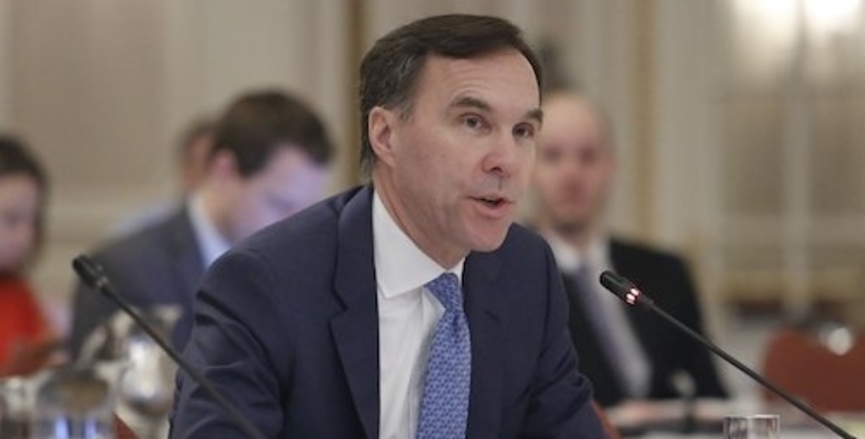How seriously do central banks take a downward dip in the economy? Very seriously. The U.S. Federal Reserve reacted to first signs of a coronavirus-induced slump by dropping its already low Fed funds interest rate by 50 basis points (one-half of a percentage point), bringing it down to 1.25 per cent. The Bank of Canada followed suit on March 4 by reducing the bank rate by 50 basis points to the U.S. level.
It will be interesting to see how the central banks react to the worldwide stock market retreat of March 9, when indexes fell like it was the 2008 great financial crisis all over again — especially considering it was set off by an oil-price war triggered by Saudi Arabia that could keep producer oil prices low for a period well beyond the coronavirus scare.
Interest rates are a big economic lever. Central banks cut them hoping to pump up a slowing economy; they raise them to dampen price inflation in an over-heated economy. The 1.25 per cent Fed funds rate now is below the 2.5 per cent U.S. inflation rate. There is not much room left to cut them further.
The U.S. and Canadian interest rate reductions did lower borrowing costs, which in theory stimulates economic activity.
It is a matter of historical record that interest rate cuts do not work well, if at all, when an economy weakens severely, as the Canadian oil-producing provinces are about to discover.
Businesses invest when they expect to make profits: lowering borrowing costs does not improve a negative profit outlook.
When a sector as important to the Canadian economy as the oil industry is hurt, many established businesses pull back, cancel planned investment and lay off employees. Uncertainty means corporations want to wait for an improved business outlook, including for oil and gas. Lower borrowing charges cannot compensate for falling commodity prices.
When a slowdown happens across the world economy, the effects are cumulative, hitting exports of all countries, and a Canadian depression can result unless the federal government steps up and takes action at home, and convinces its G7 and G20 partners to act as well.
The big lever for improving the economic outlook is government spending. In the run-up to the next federal budget, Finance Minister Bill Morneau had already let it be known the Liberal government is thinking about spending increases.
The negative impact on the economy of the March 9 oil-price shock, plus the coronavirus impact, will require major stimulus from all levels of government.
This means Ottawa stepping up and signing construction contracts, and buying more goods and services, either through cost-sharing programmes with other levels of government, or by acting on its own.
Stimulus can mean the Liberal government decides to transfer more money to provinces; or cities; or directly to citizens by improving access to employment insurance; or providing bigger student grants; or hiking the Guaranteed Income Supplement for low-income seniors.
The federal government can lend money to cities, provinces, students, new businesses, cultural activities or for scientific research.
Provincial governments can improve the economic outlook by raising minimum wage rates, and reversing spending cuts.
If we know one thing about the role of government in an economic slowdown, it is this: cutting back spending supposedly to balance the budget makes things worse.
The incessant prattle about balancing government budgets needs to be jettisoned when people are losing their jobs, and new job market entrants are turned away by employers.
We have current Canadian examples of what not to do. Jason Kenney’s Alberta budget is a prime example. What can go wrong when a government cuts spending, lays off public servants, undermines post-secondary education and tears up contracts with employees, all the while pretending it wants to balance the budget? The downturn in oil prices, and the general economic slowdown, ensures every measure just taken will make things a lot worse.
Kenney — a right-wing ideologue — had as an objective a smaller government. He could care less about balancing the budget: virtually his first act in office was to cut taxes, depriving his province of revenue, so he had an excuse to cut spending.
In normal economic times, tightening public spending slows the economy. When the economy is on the way down, austerity speeds up the descent.
As a report by Rob Shaw of the Vancouver Sun shows, the most recent B.C. NDP budget featured cuts to public services of the sort usually made by the likes of Ontario Premier Doug Ford.
Though it is not well understood, when a government has a surplus in its accounts, it takes money out of the private sector, putting people, profit-seeking and non-profit organizations into deficit.
When the public sector runs a deficit, the private sector gets the surplus.
Government deficit spending is not only welcome in the private sector, it is absolutely necessary in order to halt a downturn like the one low oil prices are going to inflict on Alberta, Saskatchewan, Nova Scotia and Newfoundland — and all of Canada.
Government deficits do leak out into the continental or wider international economy, lessening the positive impact on the Canadian economy.
To get the maximum impact out of government spending, Canada desperately needs an economic strategy based on more than natural resource exploitation and North American integration poorly disguised as free trade.
Greening the economy is the obvious way to go. Canadians deserve leadership from all levels of government to make it happen.
Duncan Cameron is president emeritus of rabble.ca and writes a weekly column on politics and current affairs.
Image: Bill Morneau/Twitter



